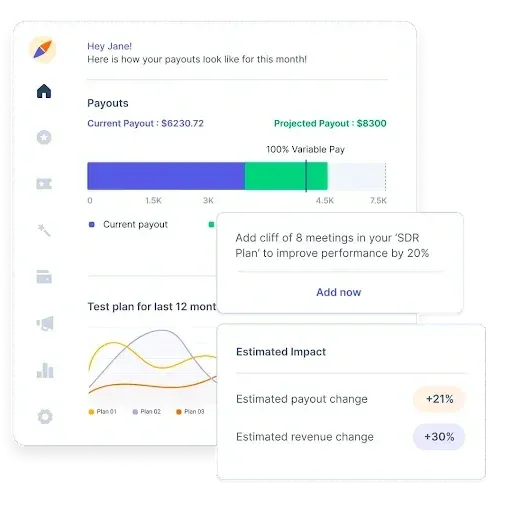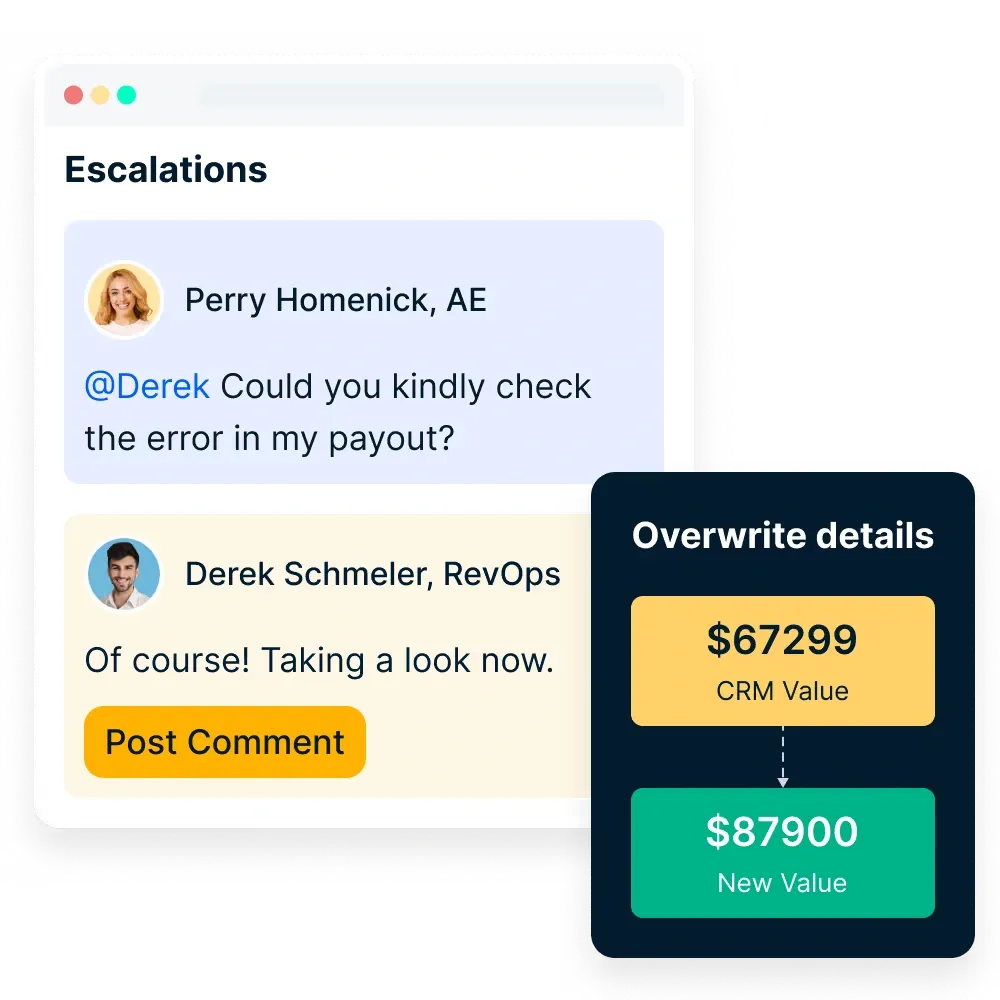On this page
Revenue operations leaders today have their work cut out for them. Everything can be peeked into using statistics from the constantly changing landscape of business competition to unpredictable markets.
But they also face an age-old issue that continues to plague sales and marketing teams everywhere: misalignment. Managing disjointed platforms and integrating them is a nightmare, which creates friction between sales and marketing. Now more than ever, these two teams must be in perfect harmony, working together to achieve common goals.
Well, the main objective of any organization is increasing revenue. And having said that, consistent revenue growth is the challenge for 78% of B2B companies.
An organization might have every block to build a successful revenue. Starting with a great product, a talented team, and a solid marketing strategy, yet its revenue is not touching heights. While the success of any organization depends on many factors, if you look closely, you’ll understand how Revenue Operations (RevOps) Strategy is the backbone of any company.
What is revenue operations (revOps)?
While strategically, revOps is a framework designed to align sales, marketing, and customer success teams to maximize revenue growth. Holistically, it is an approach that aims to break down organizational silos and create a unified revenue team.
All aspects of the customer journey are included in this framework, including but not limited to:
- Sales,
- Marketing,
- New customer onboarding,
- Revenue growth,
- Customer retention.
It was a need of the hour as businesses have been looking for ways to streamline their operations and improve the overall customer experience.
How does the RevOps team function?
The RevOps team works collaboratively to optimize revenue generation and streamline operations. They use data-driven insights and technology to identify bottlenecks in the customer journey and implement solutions to improve efficiency and increase revenue.
The RevOps team is responsible for
- identifying revenue opportunities
- developing go-to-market strategies
- implementing technology solutions
- measuring and analyzing results to optimize revenue growth.
Major transformations that companies saw in their 1st-year of implementing Revops are commendable. For instance,
- HubSpot reported a 30% increase in revenue and an improvement in customer retention rates and a reduction in customer churn.
- Slack saw a 70% increase in revenue and an improvement in sales productivity and a reduction in customer churn.
RevOps: The promising solution with its own set of challenges
RevOps is obviously the new ‘hot’ topic that is gaining popularity as businesses look for ways to streamline their operations and improve the overall customer experience.
But creating a unified revenue team requires a collaborative approach between different departments and functions. The results of companies that have implemented RevOps have been impressive, but just like all good things, RevOps also has its own set of pain points:
1. Dilemma to find the aligned team
A key difficulty of implementing RevOps is finding a team aligned with the association's goals and objectives. RevOps strategy cannot work without unified collaboration among teams and a strong leader that can drive revenue growth.
2. Define a unified customer experience
A tenacious approach to the customer journey can be challenging to achieve in organizations with multiple departments and functions. Hence the disparity among teams can cause RevOps to fail.
Clear communication and a shared understanding of the customer journey are preliminary to guarantee a uniformed harmonious experience.
3. Decentralized operations
Large organisations have decentralized operations, which can be a big barrier for RevOps to succeed as it calls for a centralized approach to operations. Moreover, the only solution is a shift in mindset and a commitment to breaking down silos to create a cooperative revenue team.
If you are not still convinced, then see how this edtech company turned its revenue performance around for good using automation.
A fast-growing ed-tech platform with a 31-member sales team faced significant challenges in managing dynamic commission plans. Every month, multiple incentive structures were introduced to drive different KPIs, creating confusion among sales reps. Without a centralized system, managers lacked visibility into plan performance, making optimization difficult. Their challenges include:
- Complex, ever-changing commission plans led to confusion and declining sales motivation.
- Managers struggled with tracking performance across multiple programs.
- No unified platform to automate and optimize commission strategies.
The Solution: RevOps-Automated Commission & Gamification
With Compass’s RevOps automation capabilities, the platform streamlined its sales commission process:
- RevOps-Automated Commission Management: Using Compass’s intuitive commission plan designer, managers could create, modify, and automate multi-tiered commission structures on a single platform—eliminating manual tracking.
- Sales Gamification & Engagement: Compass introduced a gamified system where sales reps earned badges and points for hitting milestones. Custom naming added a fun, competitive edge, boosting engagement.
- Real-Time RevOps Data Automation: Sales teams received real-time performance updates and intuitive reports, ensuring transparency and motivation.
The Impact
- 94% platform adoption rate 5
- 5,000+ points distributed monthly
- 12% increase in payouts
By leveraging Compass for RevOps automation, the ed-tech company transformed its commission strategy—boosting engagement, efficiency, and sales performance effortlessly.
Who can benefit the most from an automated revOps strategy?
RevOps benefit the organization as a whole, but the front-end receivers are the sales and marketing teams, customer success teams, and startups set out to drive collaboration and productivity.
Any organization can achieve better outcomes and drive revenue growth by restructuring a business via synchronizing teams, streamlining processes, and leveraging data insights.
RevOps assures:
- a seamless and personalized customer experience,
- Streamlined and optimized operations,
- insights into key performance metrics,
- productivity of sales and marketing teams.
Let’s learn how RevOps empowers teams to action for higher productivity and results.
1. Sales and marketing teams
RevOps enables teams to identify areas for improvement and optimize their sales and marketing revenue by aligning their efforts to achieve revenue goals.
It can also streamline lead management, sales forecasting, and contract management processes, allowing sales and marketing teams to focus on high-impact activities and achieve better outcomes with fewer resources.
RevOps can provide insights into KPIs, such as
- lead-to-close conversion rates,
- sales velocity
- customer retention rates
2. Customer success teams
Customer success teams can align their efforts with sales and marketing teams to deliver a seamless and personalized customer experience.
RevOps provide insights into customer behavior and preferences, enabling customer success teams to identify and address customer needs proactively.
Utilizing RevOps also helps:
- Streamline customer onboarding and support processes,
- Ensure that customers receive consistent messaging and high-quality support throughout their journey.
3. Startups who want to drive collaboration and productivity
Startups can benefit from RevOps by implementing a collaborative and data-driven approach to revenue growth. RevOps in startups
- align teams,
- optimize processes
- leverage data insights
- drive growth and improve productivity.
By implementing a RevOps strategy, startups can ensure that all functions are working towards the same revenue goals, eliminate bottlenecks in their sales processes, and achieve better outcomes with fewer resources.
How does RevOps deliver value?
In the same way that the evolution of the printing press transformed the publishing industry, the emergence of complex technology-enabled selling systems has disrupted the B2B business landscape.
This disruption has been amplified by the wholesale business model transformation and changing customer buying behavior. This shift in customer behavior requires companies to adapt their revenue-generating strategies to meet the demand for digital channels.
1. Streamline operations
RevOps teams focus on optimizing the entire revenue cycle, from lead generation to customer retention by eliminating unnecessary steps and reducing the time and effort required to complete tasks. RevOps achieves this through automation and optimization of processes, such as
- lead management,
- sales forecasting,
- contract management.
By automating these processes, RevOps teams enable their members to focus on high-impact activities and achieve better outcomes with fewer resources. The result is a more efficient and effective organization that is better equipped to drive revenue growth over the long term.
2. Enhances customer experience
RevOps teams work to ensure that the entire revenue cycle is optimized for customer satisfaction, including streamlining and automating processes, such as order fulfilment and customer service, to reduce wait times and improve responsiveness.
It also provides data-driven insights, helping other teams tailor products and services to meet customer needs, and ensuring consistent and aligned interactions with customers. By focusing on the customer experience, RevOps can improve customer satisfaction and loyalty,
3. Drives revenue growth
RevOps aligns teams towards the same revenue goals, providing data-driven insights into customer behaviour, sales trends, and revenue growth opportunities. Not only does it streamline and automate processes to reduce inefficiencies, but it also works towards optimizing pricing and promotions to maximize revenue.
By following a cohesive approach to maximize revenue growth and streamlining the entire revenue cycle, RevOps helps companies achieve sustainable revenue growth in the longer run. This data-driven approach allows companies to target
- the right audience,
- Selling and upselling the right products,
- optimizing pricing and promotions.
4. Improves data management
RevOps teams work towards assuring that the data is accurate, up-to-date, and attainable across departments. It enforces processes and mechanisms for data collection, cleaning, and analysis.
To improve efficiency, it integrates different systems and tools used by various departments, such as
- CRM,
- customer success software
- marketing automation
RevOps improve data security and compliance by implementing protocols for data storage, access, and usage. By ensuring that data is managed securely and in adherence with statutes, companies can minimize the risk of data breaches and other security incidents.
5. Provides insights
Growth is only accounted for if it is seen, RevOps provides insights into key performance metrics, such as
- lead-to-close conversion rates,
- customer retention rates,
- sales velocity.
These insights facilitate businesses to identify spots for improvement and optimize their sales and marketing efforts. RevOps teams accumulate and dissect data from various sources, including sales, marketing, and customer success, to provide insights into customer behaviour, sales trends, and revenue growth opportunities.
It provides valuable insights into the revenue cycle, enabling companies to make data-driven decisions.
6. Detects and remove any bottlenecks in the sales process
RevOps teams work actively towards monitoring the sales process and identifying areas where there is complacency and/or inefficiency. It reads and concludes data from
- sales cycle length,
- Customer win rates,
- Client conversion rates
It helps pinpoint areas where bottlenecks are occurring and take steps to address them. RevOps address these bottlenecks by managing the problem areas like siloed operations or misaligned objectives.
7. Improves the productivity of the sales team
RevOps teams provide sales teams with real-time data and insights into customer behaviour, enabling them to focus their efforts on the most promising opportunities.
They also work to streamline sales processes, removing unnecessary steps and automating tasks wherever possible, allowing sales reps to focus on selling. RevOps ensure that sales teams have the support they need to be successful, including access to
- marketing collateral,
- Training,
- support resources.
How Compass can automate your RevOps process
Compass goes beyond commission automation—it seamlessly integrates with your existing tech stack, including Gong, HubSpot, Salesforce, DocuSign, Salesloft, Clari, Snowflake, and Zuora, ensuring end-to-end RevOps automation.
Drive Sales Efficiency with Intelligent Automation
Say goodbye to spreadsheets and manual errors. Use pre-built templates and automation at scale to streamline commission processing.

- Real-time insights & roi tracking – Gain instant visibility into sales numbers, payouts, and team performance with live dashboards, charts, and predictive analytics.
- Pipeline & revenue forecasting – Monitor daily sales activity, analyze pipeline health, and identify opportunities with AI-powered nudges and notifications.
- Commission plan simulation – Adjust metrics, rewards, and milestones while instantly visualizing their impact on sales performance.
- Earnings Estimator for Sales Teams – Enable reps to forecast their earnings based on pipeline opportunities, boosting motivation and transparency.
Seamless operations & smarter decision-making

- Remove Revops from manual calculations – Free your RevOps team from spreadsheet headaches and outdated systems.
- Centralized dispute management – Reduce back-and-forth emails with an in-app system for resolving commission inquiries efficiently.
- Unlock compensation intelligence – Compare plan effectiveness, track payout trends, and optimize incentive strategies with data-driven confidence.
Bottom line
Revenue Operations (RevOps) is a powerful approach for aligning sales, marketing, and teams to optimize revenue growth and improve customer experience.
But how do you create a RevOps strategy specifically for your company’s needs? The answer is clear: Compass.
Compass, an enterprise-grade commission management software, is a great no-code platform for building workflows independently and implementing a RevOps strategy. It offers features such as commission automation, incentive calculation, sales performance management, sales forecasting, and error-prone processes to minimize manual work-related bottlenecks that can impact goal attainment.
Sales and marketing teams, customer success teams, and startups can all benefit from using Compass to implement a RevOps strategy and achieve better outcomes, improve productivity, and drive revenue growth.
FAQs
1. What are the 4 pillars of RevOps?
The four pillars of RevOps can vary depending on the framework. One common framework includes Operations, Enablement, Tools & Technology, and sometimes Insights or Platform. Another framework emphasizes Process Optimization, Enablement, Tools & Technology, and Insights. However, a widely recognized framework focuses on People, Processes, Platform, and Insights.
2. What is the difference between CRM and RevOps?
CRM (Customer Relationship Management) is a tool used to manage customer interactions and data. RevOps (Revenue Operations) is a broader strategy that aligns sales, marketing, and customer service teams to optimize revenue generation. While CRM is a tool, RevOps is a methodology that can utilize CRM to streamline processes and improve customer experiences.
3. What is the difference between RevOps and FinOps?
RevOps focuses on optimizing revenue streams by aligning marketing, sales, and customer service processes. FinOps, on the other hand, is centered around managing financial resources, budgeting, forecasting, and ensuring financial compliance. While RevOps is more operational and customer-focused, FinOps is strategic and financially oriented.
4. What is the RevOps methodology?
The RevOps methodology involves aligning and optimizing the processes of sales, marketing, and customer service teams to maximize revenue. It emphasizes breaking down departmental silos, improving efficiency, and using data insights to drive strategic decisions. RevOps aims to create a unified customer experience and streamline operations to increase revenue growth and customer satisfaction.













